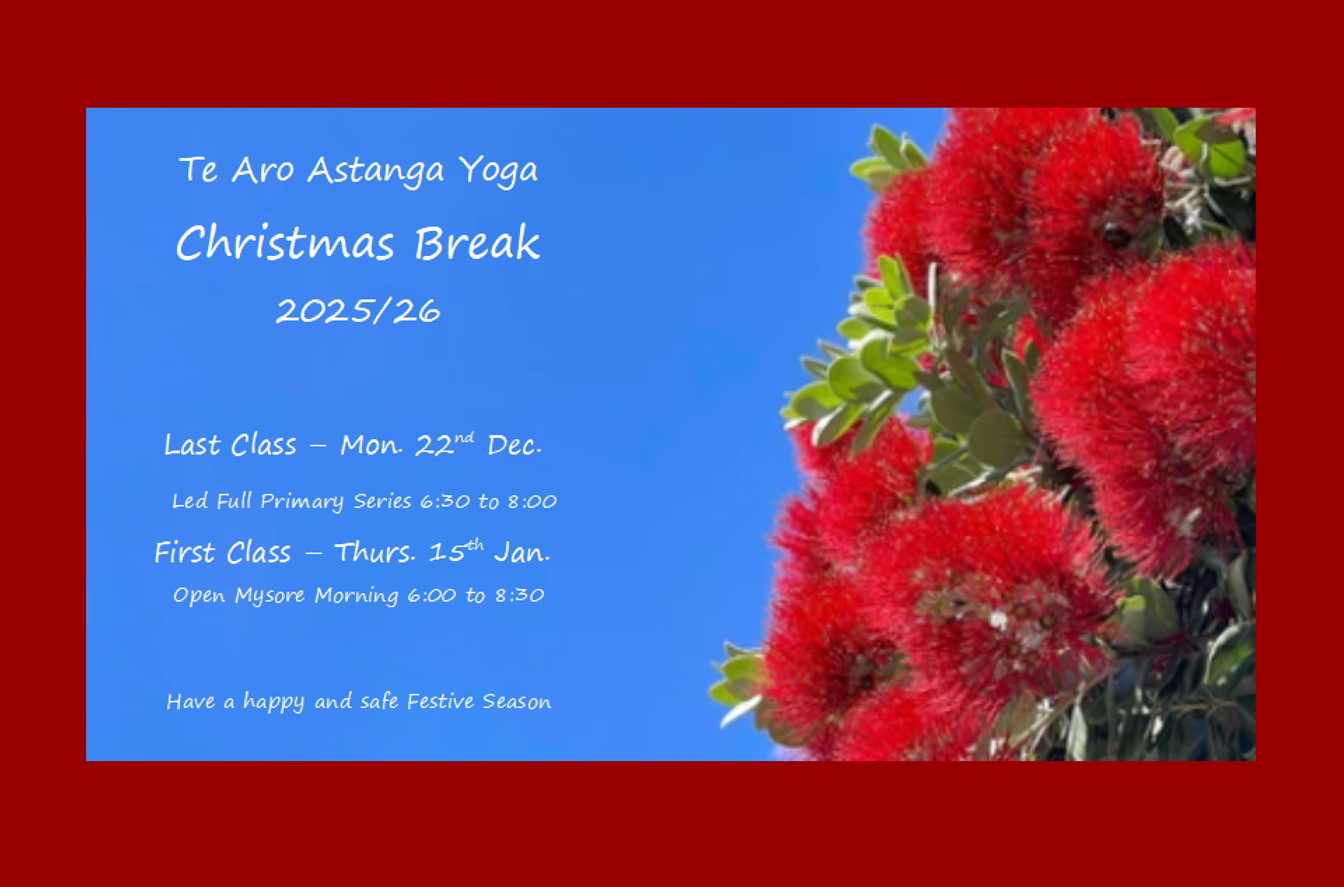A Practical View of Yama – Pt 1 Ahimsa
TAAY Summer Break 2025/26
As 2025 draws to a close I’d like to thank everyone who has supported Te Aro Astanga Yoga this year. I recognise how difficult the year has been financially for many of you and appreciate that you have made the commitment to continue to practice Ashtanga Yoga with us. Te Aro Astanga Yoga is surviving thanks to you! I hope to see you all for a fantastic 2026.
Last Class 2025: Monday 22nd Dec. — Led Full Primary Series 6:30 to 8:00 am.
First Class 2026: Thurs. 15th Jan. — Open Mysore Morning Class 6:00 to 8:30 am
I hope that you and your whānau have a safe and happy Festive Season.

Thanks Mike – I always enjoy your blog posts… it’s the only blog I read! Being gentle to oneself is a lesson Im coming across a lot in the world of new parents… plays into that old ‘get your oxygen mask on first’ plane metaphor, but in our desire to be seen as selfless and humble we sadly ignore this. Anyway, hope you’re well and looking forward to getting back into practice soon!